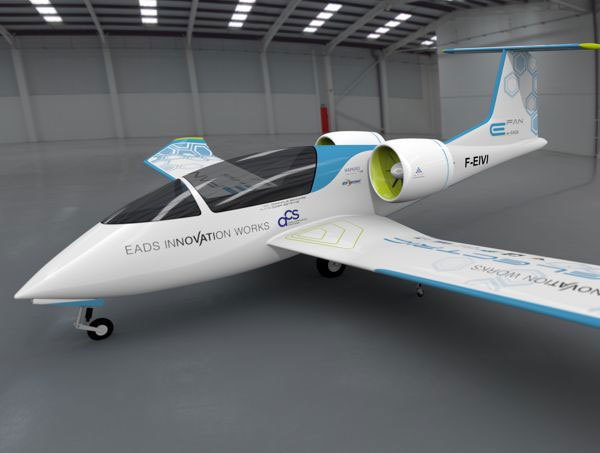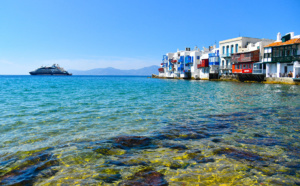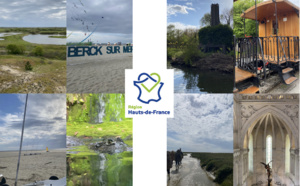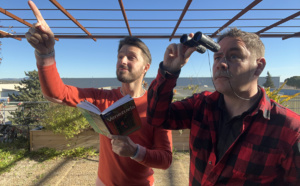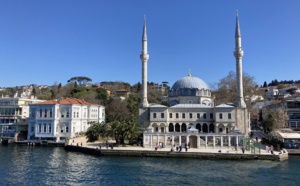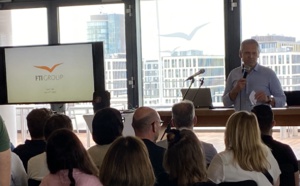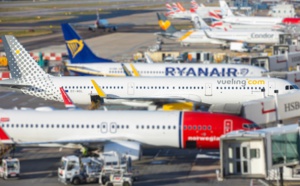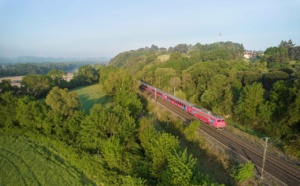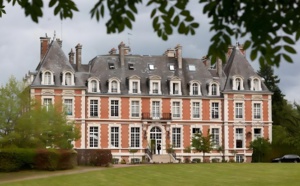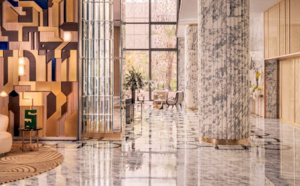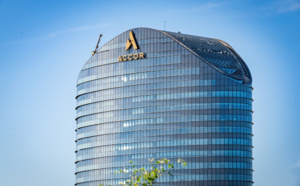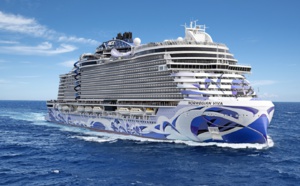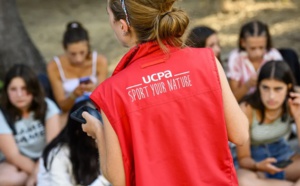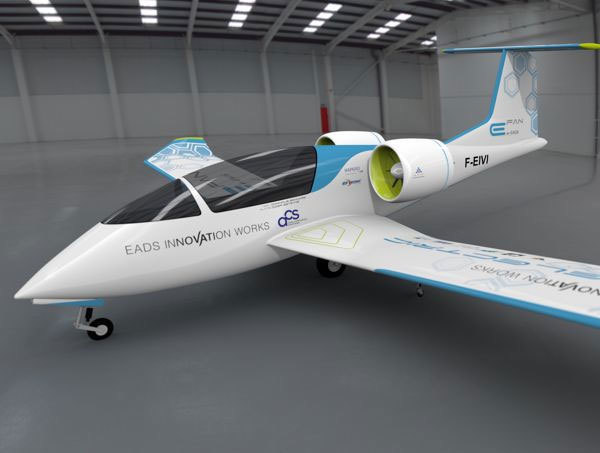
The 100% electric training plane developed by the Airbus Group and Aero Composites Saintonge with the help of the DGAC - DR
TourMaG.com - Will it be possible to see, one day, planes powered only by electric energy?
Jean Belotti: “Just a few years ago, this seemed impossible.
Yet, last April 25th, in Mérignac, took place (after twenty trial flights), the first official flight of the 100% electric training plane, which was an important breakthrough for the manufacturers.
What is interesting to note is the fact that the Airbus Group and a small company of 10 employees, set up in Royan, Aero Composites Saintonge (ACS), took up the challenge in 2011 of industrializing an electric powered plane - with the support of the DGAC (the general direction of civil aviation.)
This first version is 6.7 meters long, 9.5 meters wide and 550 kg in carbon fiber, propelled by two motors of 60 kW each, and powered by lithium-ion polymer batteries of 250 volts.
Able to fly up to 220 km/h, its cruising speed is at 160 km/h.
Since it was declared that “in the world, it will be necessary to train 650,000 young professionals in the next 20 years”, which will call for 21,000 training planes, the market is thus gigantic. Airbus hopes to gather 10%.
The advantages of the E-Fan are essentially the following:
-Its price, which lowers the lesson hour below €100, versus €120 on average on thermic motored planes.
-and its maintenance, much more simple, thus less costly than a classic plane.”
TourMaG.com - But it is only a training plane?
Jean Belotti: “Indeed! This first model is as far as the one that will be able to transport passengers just like Clément Ader’s plane was to the Concord.
Certainly, there is a beginning to everything and with the technical progress helping, more and more important improvements will emerge, but this will take more or less time.
That being said, two questions can be formulated about the training version:
1. -The battery life only lasts slightly over an hour (compared to the four hours of classic tourism place), which will impose training sessions that won’t exceed 45 to 50 minutes and under the condition of staying in the airport area.
2. -What will be the reaction of a pilot trained on a plane that makes as much sound as a hair dryer when he will be appointed to one of the current passenger planes?
While the procedures may be identical, the context is different. I remember pilots coming from the Constellation who couldn’t adapt to the ear-piercing sound of the Vickers Wiscount!
Wouldn’t the simplest solution be to equip training pilots on these silent plane with helmets able to imitate the three types flight sounds: ascending, cruising, and descending?”
TourMaG.com - The manufacturers have probably conceived more developed versions in case of an eventual passenger flight?
Jean Belotti: “Of course! The E-Fan already exists in two versions. The prototype, the E-Fan 1, has two tandem seats, the E-Fan 2 is equipped with two side by side seats.
The E-Fan 4, with a hybrid propulsion, currently being designed, will provide new perspectives. It will be equipped with four seats and a flight autonomy of more than three hours, instead of one hour.
Furthermore, there is a european project, called “e-thrust”, in partnership with Siemens, Rolls-Royce and Diamond Aircraft.
A testing ground should be up and running in 2017, in Germany, in Ottobrunn, knowing that before it can become a commercial plane, we’ll need to revolve the eternal problem of the battery weight, too big in size, that will imperatively need to be reduced.
It was announced that “the goal was to manufacture, in the next twenty-five years, a regional hybrid plane of 90 seats, with a flight autonomy of three hours”, which could, in addition, “fly at night without disturbing local residents!”
TourMaG.com - Where does the project stand compared to that of the Suisse Piccard that the media has talked about?
Jean Belotti: “The Swiss Bertrand Piccard and André Borschberg, with the Polytechnic School of Lausanne, have created the “Solar Impulse,” a plane that is powered by solar panels.
I learned that in 2015, they will attempt to go around the world with it, in different steps. As of now, it is as big as a large Airbus, but can only board…one passenger!
In any case, these attempts are not rare. For exemple, solely for experimental purposes, the Safran group, with Honeywell have just created a landing train with electric motors, the EGTS (Electric Green Taxiing System), for an A320 Airbus.
In conclusion, thanks to the inventions, innovations, discoveries of our engineers and technicians, it is encouraging to notice that the acceleration of technical progress may lead towards an ecological revolution in aeronautical engineering.
Jean Belotti: “Just a few years ago, this seemed impossible.
Yet, last April 25th, in Mérignac, took place (after twenty trial flights), the first official flight of the 100% electric training plane, which was an important breakthrough for the manufacturers.
What is interesting to note is the fact that the Airbus Group and a small company of 10 employees, set up in Royan, Aero Composites Saintonge (ACS), took up the challenge in 2011 of industrializing an electric powered plane - with the support of the DGAC (the general direction of civil aviation.)
This first version is 6.7 meters long, 9.5 meters wide and 550 kg in carbon fiber, propelled by two motors of 60 kW each, and powered by lithium-ion polymer batteries of 250 volts.
Able to fly up to 220 km/h, its cruising speed is at 160 km/h.
Since it was declared that “in the world, it will be necessary to train 650,000 young professionals in the next 20 years”, which will call for 21,000 training planes, the market is thus gigantic. Airbus hopes to gather 10%.
The advantages of the E-Fan are essentially the following:
-Its price, which lowers the lesson hour below €100, versus €120 on average on thermic motored planes.
-and its maintenance, much more simple, thus less costly than a classic plane.”
TourMaG.com - But it is only a training plane?
Jean Belotti: “Indeed! This first model is as far as the one that will be able to transport passengers just like Clément Ader’s plane was to the Concord.
Certainly, there is a beginning to everything and with the technical progress helping, more and more important improvements will emerge, but this will take more or less time.
That being said, two questions can be formulated about the training version:
1. -The battery life only lasts slightly over an hour (compared to the four hours of classic tourism place), which will impose training sessions that won’t exceed 45 to 50 minutes and under the condition of staying in the airport area.
2. -What will be the reaction of a pilot trained on a plane that makes as much sound as a hair dryer when he will be appointed to one of the current passenger planes?
While the procedures may be identical, the context is different. I remember pilots coming from the Constellation who couldn’t adapt to the ear-piercing sound of the Vickers Wiscount!
Wouldn’t the simplest solution be to equip training pilots on these silent plane with helmets able to imitate the three types flight sounds: ascending, cruising, and descending?”
TourMaG.com - The manufacturers have probably conceived more developed versions in case of an eventual passenger flight?
Jean Belotti: “Of course! The E-Fan already exists in two versions. The prototype, the E-Fan 1, has two tandem seats, the E-Fan 2 is equipped with two side by side seats.
The E-Fan 4, with a hybrid propulsion, currently being designed, will provide new perspectives. It will be equipped with four seats and a flight autonomy of more than three hours, instead of one hour.
Furthermore, there is a european project, called “e-thrust”, in partnership with Siemens, Rolls-Royce and Diamond Aircraft.
A testing ground should be up and running in 2017, in Germany, in Ottobrunn, knowing that before it can become a commercial plane, we’ll need to revolve the eternal problem of the battery weight, too big in size, that will imperatively need to be reduced.
It was announced that “the goal was to manufacture, in the next twenty-five years, a regional hybrid plane of 90 seats, with a flight autonomy of three hours”, which could, in addition, “fly at night without disturbing local residents!”
TourMaG.com - Where does the project stand compared to that of the Suisse Piccard that the media has talked about?
Jean Belotti: “The Swiss Bertrand Piccard and André Borschberg, with the Polytechnic School of Lausanne, have created the “Solar Impulse,” a plane that is powered by solar panels.
I learned that in 2015, they will attempt to go around the world with it, in different steps. As of now, it is as big as a large Airbus, but can only board…one passenger!
In any case, these attempts are not rare. For exemple, solely for experimental purposes, the Safran group, with Honeywell have just created a landing train with electric motors, the EGTS (Electric Green Taxiing System), for an A320 Airbus.
In conclusion, thanks to the inventions, innovations, discoveries of our engineers and technicians, it is encouraging to notice that the acceleration of technical progress may lead towards an ecological revolution in aeronautical engineering.






